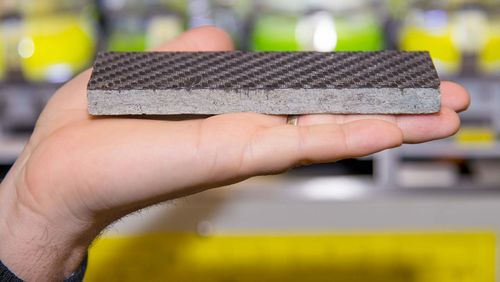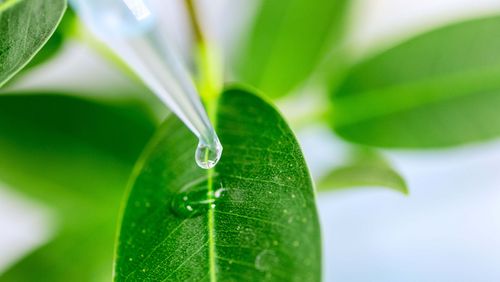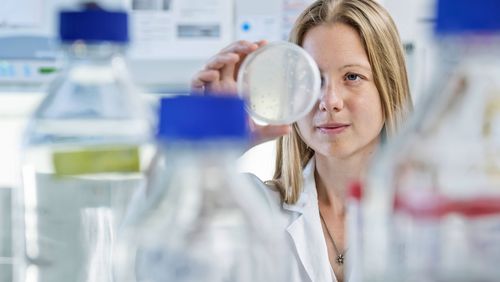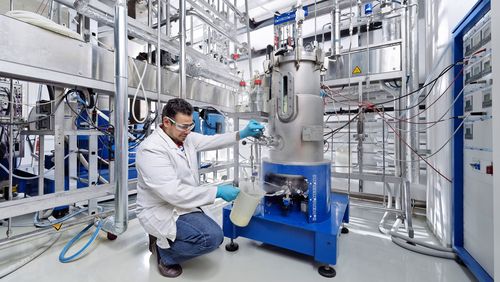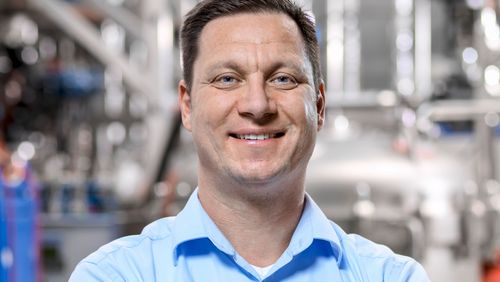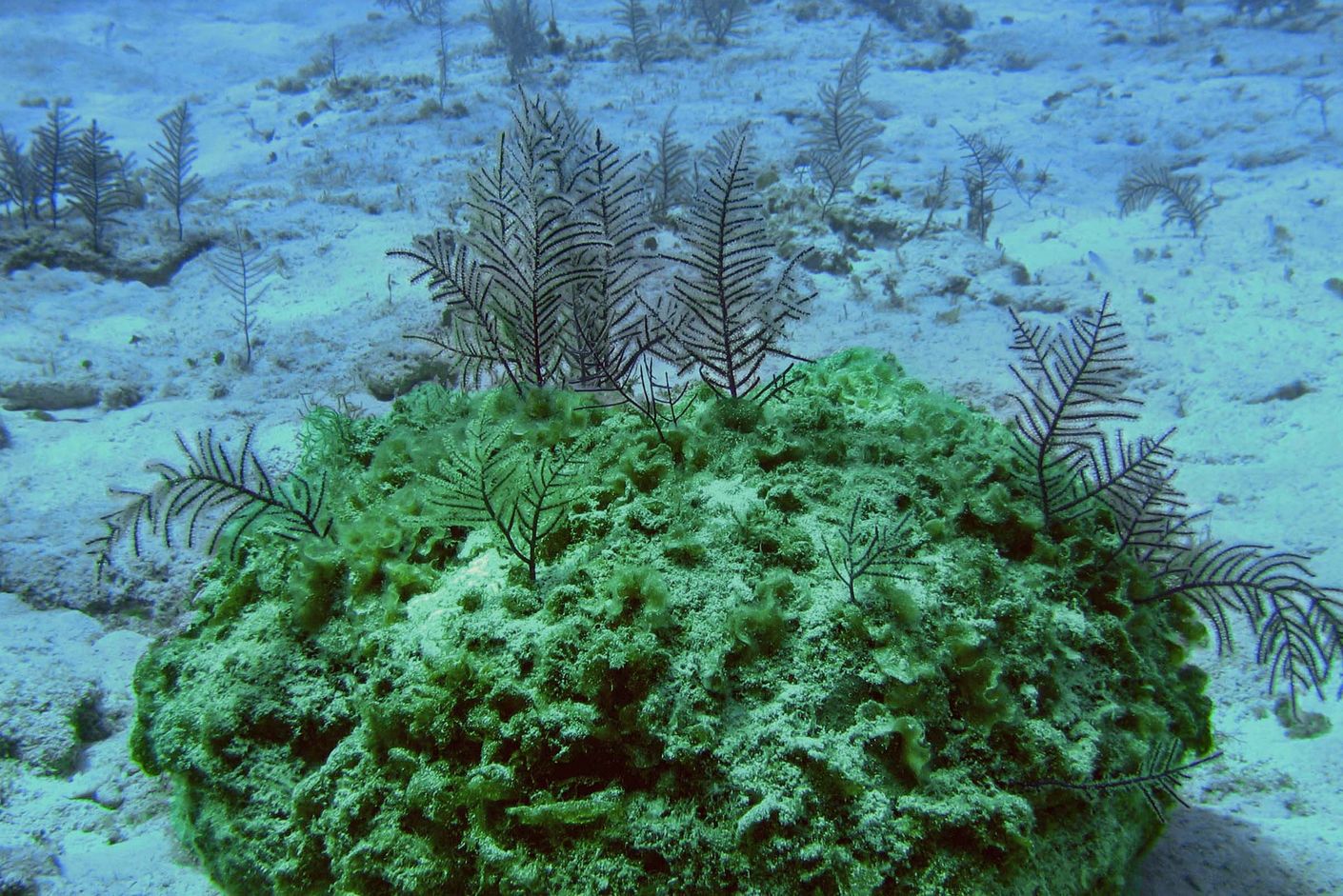
Copying nature
Novel anti-inflammatory agents, a new antibiotic, “green” carbon fibres, a palm oil alternative, algae as fuel—these are just a few of the projects currently pursued by the Synthetic Biotechnology team at the Technical University of Munich. But Werner Siemens Foundation Endowed Chair Thomas Brück remains modest, saying his researchers “can do a lot, but not everything”. Where necessary, Brück seeks reinforcement and collaborates with partners from industry and research. He also envisions regular meetings with the leaders of other projects supported by the Werner Siemens Foundation.
“The Werner Siemens Foundation promotes cutting-edge research. We should take advantage of the synergies that arise.” Biochemistry professor Thomas Brück spares no praise when it comes to his fellow researchers whose projects receive funding from the Werner Siemens Foundation. To benefit from one another’s expertise, he would like to “meet them and ask: what are you working on?” He could easily imagine that joint, third-party-funded projects would be the result. He can also envision creating a larger network of Werner Siemens Foundation Endowed Chairs.
New partnership in Israel
Brück has mastered the art of collaboration. The most important new partnership established in 2020 is a collaboration with the renowned Weizmann Institute of Science and with Bar-Ilan University in Israel, a high-tech project launched to produce novel anti-inflammatory agents. Brück’s favourite candidate is cyclooctatin. For the past six years, Brück’s team has already been able to manufacture small amounts of cyclooctatin using the techniques of biotechnology. Now, the partnership with the Israeli researchers will help them to produce larger amounts. “Our Israeli bioinformatics colleagues have designed new algorithms to calculate how we can improve the surface structure and the active centre of a key enzyme—which leads to increased efficiency and stability throughout the entire process,” says Brück. “Our team didn’t have this knowledge, but our colleagues in Israel are international leaders in this highly specialised area of bioinformatics.”
Fighting inflammation
Back at the Werner Siemens Synthetic Biotechnology (WSSB) lab in Munich, Brück plans to use the data and results delivered by the Israeli bioinformatics specialists to improve “his” enzymes that produce cyclooctatin. “With this technology, we can create a completely new anti-inflammatory drug that potentially has fewer side effects than standard products on the market,” says Brück. His goal is to test the new agent in clinical trials. “For that, we need to produce it by the kilo,” he explains. Thanks to the know-how of the Israeli elite researchers, he can now make production of cyclooctatin more stable and higher-yielding.
Photo: Thomas Brück, TUM
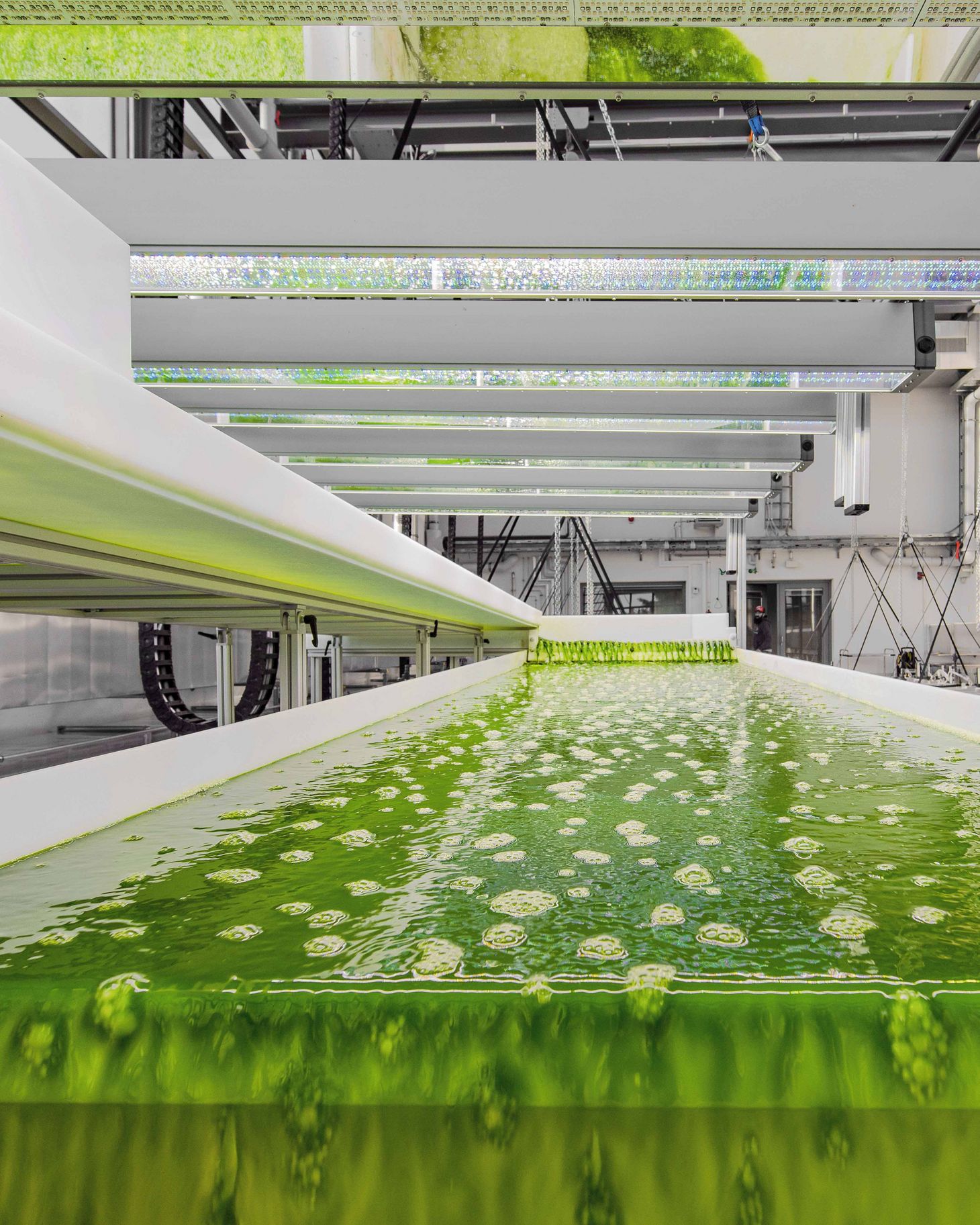
Inspirational corals
In mid-2020, Thomas Brück’s team also developed a production process for an agent that is effective against bacteria, specifically: against multiresistant tuberculosis bacteria. For this, his team reconstructed erogorgiaene, a naturally occurring antibiotic. In nature, erogorgiaene is produced by the Caribbean horn coral. But coral reefs are ecologically too valuable to be sacrificed for harvesting erogorgiaene. Moreover, the horn corals produce only small amounts of the agent—and they are listed as an endangered species. Thomas Brück and his PhD student Marion Ringel, together with colleagues from Berlin, Canada and Australia, succeeded in producing the antibiotic agent in the lab—without sacrificing a single coral. The main function in the process is taken on by genetically optimised coliform bacteria. After being fed with glycerine (a byproduct of biodiesel production), they produce a molecule that can be transformed into erogorgiaene using enzymes. The entire process produces no waste, as all by-products are reused in a closed-loop cycle. Through the innovative procedure, larger amounts of erogorgiaene can be produced at a lower cost; a patent has been filed for the new technique.
Green carbon
Green carbon, the “invention” made by Thomas Brück and his team in 2019, has become highly sought-after in the past 12 months. Several industrial companies have expressed interest in the carbon-neutral production of carbon fibres using algae, including large international producers of sporting equipment that would like to manufacture high-performance sports gear and clothing from green carbon. “This is an application for the material that I had certainly never imagined,” Thomas Brück says. Applications in construction, however, were definitely part of the plan. Last year, his team worked with German partner company TechnoCarbon Technologies to build a prototype for a six-metre T-beam for a Finnish construction company that wants to use the carbon-stone composite in its building projects.
Integrating ecology and construction
“The combination of ecological carbon fibres and stone is a perfect alternative to steel in the building sector,” says Brück, adding that the material can be used to realise even large, complex constructions like bridges. Brück’s team produced a reinforcement bar to strengthen concrete girders from the inside. Normally, reinforcement bars are made of steel, but steel loses its elasticity over time and begins to rust, which can cause cracking. By contrast, the carbon-stone composite is rust-proof, weighs only half as much as steel—and is equally stable. Independent tests have confirmed as much. “The results of the stress tests by the German Institute for Standardization are truly surprising—even for us,” Brück says. The new composite material is also a viable alternative to concrete, as it is suitable for constructing very thin yet strong supporting walls and floors. Prefabricated module systems that get by without cement would be particularly “green”. “This would reduce the CO2 output in construction—because cement production is currently responsible for roughly five percent of the world’s carbon-dioxide emissions,” says Brück. A further advantage is that the carbon-stone composite material is manufactured on the basis of algae, which absorb carbon dioxide. “Our production process using algae absorbs more CO2 than it emits,” says Brück. “Green carbon has the potential to revolutionise the construction industry.”
Value chains
Brück has already been contacted by Composite United e.V., the German association of carbon fibre manufacturers and buyers, various federal ministries in Germany and major chemical companies who are interested in preparing the technology for producing ecological carbon fibres for market—and in doing so, creating a permanent carbon sink. The next task for Brück is designing a manufacturing process suited for cooler regions, as the production of algae-based carbon fibres is dependent on heat and solar power. One possibility is gas fermentation, which has two major advantages: “For one, gas fermentation could be combined with our oleaginous yeast refinery,” the biotechnology professor explains. “The oil created by our yeast could be used very efficiently for carbon-fibre production. Second, it would be possible to couple the procedure with manufacturing ‘green’ hydrogen.”
Ecological hydrogen
Brück explains his rather sudden reference to hydrogen by saying that the element is currently seen as the most promising alternative to fossil fuels. He envisions manufacturing hydrogen in a closed-circuit, value-adding biochemical cycle. In layperson’s terms, the cycle would be as follows: wind and solar power are used to split water molecules into hydrogen and pure oxygen. Brück then wants to channel the pure oxygen into his biorefinery: yeast love pure oxygen and it helps them to produce larger amounts of biomass and oil. Moreover, the hydrogen and the carbon dioxide that also arise through splitting the molecules would be used for gas fermentation and converted into acetic acid. The acetic acid is mixed with carbohydrates from biogenic residual material (for example, straw) and then fed to the oleaginous yeast; the latter are able to produce an abundance of oil in a short time—WSSB was granted a patent in 2019 for the procedure. Using techniques of biotechnology and sustainable chemical processes, the resulting oil can be converted into a wide range of basic substances—the latest being a palm oil alternative.
Palm oil replacement
Palm oil is a widely used resource, but its cultivation destroys the world’s rainforests. “We now have a complete replacement for palm oil,” Brück says with evident satisfaction. The new spin-off company Global Sustainable Transformation is responsible for bringing the palm oil replacement to market. An agreement has already been concluded with a US food company, which has the rights to produce the palm oil alternative.
Fuel from algae
The Covid-19 pandemic and ensuing lockdown brought the lab experiments at WSSB to a halt. “But the three-month waiting period also gave several firms time to see that they have to get more serious about sustainability if they want to maintain a market presence in the long term,” says Brück. One such company is airline manufacturer Airbus, which is currently focusing on solutions for sustainable air travel. The company’s strategy team is made up of diverse suppliers—and Thomas Brück, who is working with industrial partners to identify potential locations and methods for accelerating the production of the sustainable fuel. Brück has his eye on an algae production site measuring 100 hectares in Italy. Why Italy? “Because Airbus has operations in Italy,” says Brück, “and because Italy is a major player in the food industry.” Food industry? “Yes, the food industry. I would love to create really good pasta made of algae.”
Text: Brigitt Blöchlinger
Photo: Andreas Heddergott, TUM
